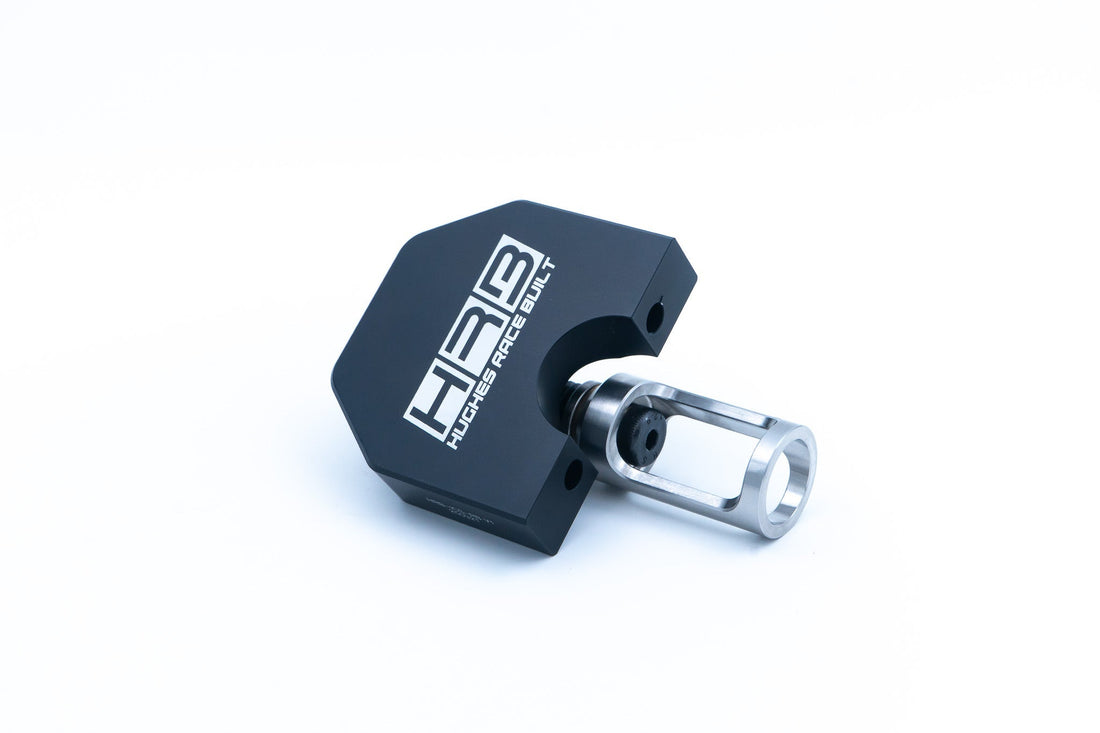
How to Replace Valve Springs on an RB25 Without Removing the Head
Share
If you’ve ever done a top-end refresh on a Nissan RB25, you already know how time-consuming it can be, especially when it involves pulling the head just to swap valve springs or replace valve stem seals. But what if you could do it faster, without removing the head at all?
That’s the exact problem we set out to solve when we designed the HRB in-car valve spring compressor tool for RB engines.
Why We Designed a Better RB Valve Spring Tool
In our engine shop, we often refresh top ends—cam upgrades, leaking valve stem seals, worn springs. In many cases, the bottom end is fine, but a full head removal still meant wasted time and extra risk. We tried the generic valve spring compressors, and they can be made to work on the bench, but in-car? Not so much.
We ended up modifying old tools, welding up custom fixtures, or digging through the drawer of “almost right” tools just to get the job done. Even when it worked, it wasn't reliable. That inefficiency is what led us to design a purpose-built solution.
Can You Really Replace RB Valve Springs Without Pulling the Head?
Yes—and many engine builders do it routinely. With the right approach, you can replace valve springs in an RB25 with the head still on the engine, using simple tools and a methodical workflow.
Tools You’ll Need
To remove valve springs in-car on an RB engine, you’ll need:
- An in-car valve spring compressor tool (like the HRB RB Valve Spring Compressor)
- Compressed air and a spark plug adaptor or a nylon rope for valve support
- Tweezers or a magnetic tool for keeper (collet) removal
- A torque wrench for reassembly
Step-by-Step: How to Replace RB Valve Springs Without Removing the Head
1. Hold the Valve in Place
Before removing the spring, you need to keep the valve from dropping into the cylinder.
Option 1: Compressed Air
Screw an adaptor into the spark plug hole and apply compressed air (90–120 psi) to keep the valve sealed. Some leakage is normal—just maintain pressure.
Option 2: The Rope Trick
Feed a clean nylon rope into the cylinder with the piston at bottom dead center, then turn the crank to push the piston up. The rope traps the valve in place gently but securely. Remember to hold on to one end of the rope!
2. Clear Access to the Valve Spring
You'll need to remove the cam to get to the spring. The RB head can be tight for space, so be methodical. If you're unfamiliar, label the components and keep parts organized—we recommend using the HRB RB Valve Train Organizer Tray for this job.
3. Compress the Valve Spring
Install the HRB in-car valve spring compressor. Our tool is built specifically for the RB20, RB25, and RB26 platforms, with a large cutaway in the retainer cup for better visibility and access. Compress the spring enough to free the valve collets (keepers), then remove them with tweezers or a small magnet.
4. Remove the Spring and Retainer
Release the compressor slowly, then lift out the spring and retainer. Now’s the time to inspect or replace seals, or install upgraded springs for a performance build.
5. Install the New Spring
Drop in the new spring and retainer, compress again, and carefully reinstall the keepers. A precision fit tool makes this much easier and more consistent—especially when doing all 24 valves.
6. Repeat Across the Head
Work methodically one cylinder at a time. A good rhythm, clean parts, and a solid tool make a big difference in build quality and time savings.
Why In-Car Valve Spring Jobs Are Worthwhile endeavour
- Time saved: No need to remove and reseal the head
- Less risk: Fewer chances to damage the head gasket or hardware
- More efficient: Perfect for track cars, high-mileage RBs, or cam/spring upgrades
Why We Built the HRB RB Valve Spring Compressor
We didn’t set out to just build another universal valve tool. We designed ours to solve real problems for professional engine builders and serious enthusiasts working on Nissan RB platforms. It had to fit perfectly, compress confidently, and give you the visibility you need to do the job right—without pulling the head.
And once we nailed the RB version, we expanded the lineup: JZ, K series, B series, BARRA, GR Yaris, and more.
Final Thoughts
Replacing valve springs on an RB engine no longer has to be a workshop headache. With the right process and a purpose-built tool, it becomes a fast, repeatable job—even in tight engine bays. That’s why we designed the HRB RB Valve Spring Compressor: to help you build better, faster, and with full confidence.
FAQ:
Can I remove RB25 valve springs without taking off the head?
Yes, you can. With a proper in-car valve spring compressor tool (like the HRB RB version), plus compressed air or a valve-holding rope, you can safely remove and replace valve springs without removing the cylinder head.
Is the HRB in-car valve spring tool compatible with RB20 and RB26 as well?
Yes — the HRB RB Valve Spring Compressor is compatible with RB20DET, RB25DET, RB25 NEO, and RB26DETTtwin-cam engines. It’s built specifically to fit the geometry of the RB head and works for all these variants.
Can I do this job without compressed air?
Yes — the rope trick is a reliable alternative. Feed nylon rope into the cylinder, then rotate the crank to push the piston up and hold the valve in place from below.
What makes the HRB valve spring tool better than a universal compressor?
Universal compressors rarely fit RB heads well in-car. The HRB RB tool is specifically designed for RB engines: compact for tight bays, strong enough for daily use, and shaped to give you excellent access to keepers and springs.
